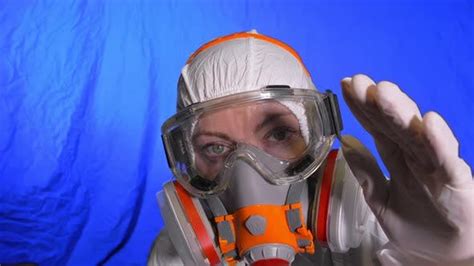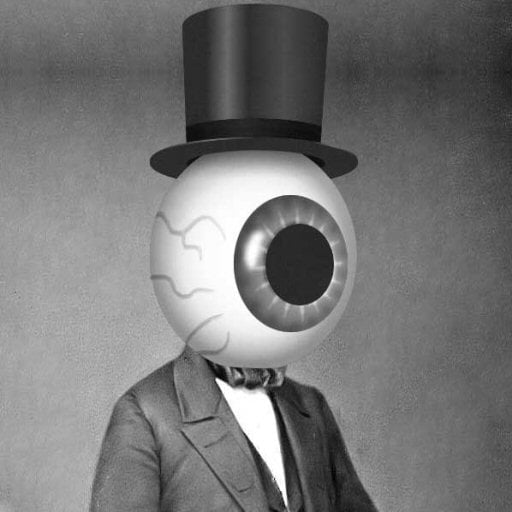So I was just wondering what is, in your opinion the best Resin printer to get that just works like how Bambu printers in the FDM space just seem to work.
Or
Just what resin printer would you recommend purchasing?
I have a mars 3 and looking to upgrade to maybe a Saturn 4 ultra because I want a bigger build plate and auto leveling seems nice so it’s one less step I need to do.
I haven’t bought one in a year or two, but I don’t think there’s an equivalent.
I recommend something like a Bambu for people who want “a printer to supplement their hobby, not be their hobby.”
Resin printing is incredibly fucking cool, don’t get me wrong, but it’s also like a finicky thing, between leveling (if you have an older Saturn like I do), resin temperature, vat film replacement, model cleaning, safe ventilation, and on and on.
If you wanna “set it and forget it” resin is not gonna be that. Probably ever, but definitely in its current form. You’re just gonna have to do a lot more post processing than you will with fdm.
All that said, if you’re fine with it basically being a hobby that can supplement your other hobbies go for it. I didn’t do fdm till after I did resin, and the detail and print quality you’ll get out of a even an older tuned resin system is in a different universe than what you’ll get out of any modern fdm system. But you’re gonna pay for it in extra effort and various pita that do not exist with fdm.
(I can rec a Saturn for sure, I have a 2 and I love that thing.)
Funny, in terms of “set and forget” I rank resin way above fdm.
The handling of the resin doesn’t detract from this at all. You have to do it every time so it’s not like you’re spending hours trying to figure something out like with fdm. Even after you get your filament and printer tuned just right, each print represents its own unique challenges if not designed perfectly for 3d printing. On top of that, there’s way more points of failure in an fdm printer, and unless you’re technologically inclined it can be really difficult to figure it out. (Obviously problems like this decrease when you get a machine like a Bambu.)
I’ve spent weeks at a time trying to tackle issues with my fdm printer, and even when it’s in full working order, you never know when something might go wrong.
My second hand resin printer from anycubic, however, just… Prints. It took me an hour or two to learn the new “mechanics” of resin slicing, prepping models in the slicer takes a little longer than it does with fdm, but it just cranks prints out and i don’t even worry anymore if I’m going to come home to a busted print or not. At worst a small detail will have failed to print properly. Fdm printer messes up halfway through and you might end up with a 100g solidified mass of plastic around your hotend…
Whole heartedly, FDM is laughably worse at the hobby/consumer level. I sold my Ender 3 because it was just a pain in the ass, intending on never 3D printing again.
A coworker mentioned the Elegoo Mars 4K being so cheap so I gave it a shot. I’ve printed so much with it, and I have literally never had a problem once I dialed in my exposure time with the resin I like. I don’t even fuss with how long the resin has sat idle. Months can go by between prints and I don’t even bother stirring it. It just cranks things out like a magician.
Everyone who can set up adequate ventilation and buy thick rubber gloves: get a resin printer and never look back.
Well, I should say that fdm certainly has its place. I do a lot of part prototyping, for something that I might need to print 5 or 6 different versions of, I’m 100% going to use my fdm printer.
Resin printers imo are really only good for things you want to look pretty or have shapes too complex to achieve with fdm. If it’s something that prints easily and doesn’t need immaculate quality, [and you have an fdm printer that doesn’t make you want to commit war crimes (like the ender 3)] fdm is less annoying.
A few degrees difference in ambient temperature can drastically affect your exposure times, and god help you if you have a print failure and forget to clean and filter your vat.
As far as model complexity for 3d printing, you absolutely still have those issues, unless you only ever print pre-supported models (which I absolutely love, but aren’t ubiquitous.)
I have a pretty heavily customized ender 3 and I don’t recommend that to people who don’t want 3d printer maintenance as a hobby either to be frank.
I will say though, my issues with resin are never with the machine itself, it’s always the material and the specific prints.
Not as bad as FDM but you do need to consider resin and drainage for any part that could have hollow/pockets.
Not to mention it’s incredibly toxic. So you have to be very careful with the handling, storage and ventilation.
That’s some nasty stuff and you don’t want to cut corners with it. Can’t beat it for miniatures and details though.
I would just about tolerate the fuss of a resin printer if I didn’t have to think about fumes. That alone puts it out of reach for me.
I won’t claim it’s the equivalent of the Bambu Labs FDM printer, because I’ve never done FDM printing.
On top of that, I’m only familiar with the one resin printer I’ve used.
Anyway, it’s an Anycubic Photon Mono X 4k. I’ve had really good luck with it, and I’ve printed over 200 miniatures and other things. I’ve had some failed prints but they were almost always my fault for doing something dumb, and there haven’t been that many overall. I’m guessing easily less than 5%.
I wouldn’t recommend the exact same model as mine, because they have newer ones (like an 8k version of mine and some others).
But I would definitely recommend the Anycubic Photon line as worth looking into. Read some reviews & watch some videos.
Good luck!
Yeah I’m looking really at any cubic mono 5s pro or the Saturn 4 ultra. As my two top contenders for upgrades.
All of them except the Prusa. They are all proprietary schemes to get you to subscribe to software. There are hacked sub par tool chains to attempt to use them freely, but no one really does it in practice enough that you see them using the thing regularly.
All high resolution displays are proprietary and completely undocumented publicly. Every display is different in how to communicate with it and they change constantly where reverse engineering one will do nothing of value. The next batch of displays manufactured will change in some fundamental way that means the previous reverse engineering efforts must be redone from scratch. Reverse engineering displays and their protocol is a PITA and usually ruins a display or few. You need complex jigs to handle them outside of their final packaged assembly or things break extremely easily. I’ve messed with some smaller simple graphics and LCD displays and reverse engineering, and it is not fun. So you’re unlikely to ever see one of the proprietary resin printers reverse engineered for use with open source software. So full ownership is not an option. It is basically just like bambu but worse. As far as I’m concerned, the Prusa is the only resin printer for sale because I am not for sale/exploitive manipulation, or renting stuff for a one time payment of an equivalent cost of ownership. The Form Labs stuff is probably the prosumer level go-to.
Form labs isn’t really in my price range sadly.
Resin printing is a breeze compared to FDM.
It only has one motorised axis that needs configuring, afterwards it just works. There are so many less variables that you can get a decent result with even the cheapest of printers without much fiddling.
So I’d focus more on the features and the size of the buildplate than on reliability.
Resin printing is a breeze compared to FDM.

What you’re asking for is going to be way overpriced. Heygears is likely the pro-sumer brand you’re looking for.
I saw their slicer needs an internet connection to slice files. Which is a major deal breaker for me.
Yeah, but it’s the only hold your hand experience for resin printing that isn’t even more expensive. I honestly think the hold your hand experience is unnecessary for resin printing. It’s already way easier than FDM.
Stick with Elegoo, they’re great.
FDM seems easier tbh. I just slice and throw it on the printer I have a Creality k1 atm and it just goes. I don’t need to worry much about anything. I’d say resin has a bit more to dial in. And clean up is another thing. But I agree probably sticking with elegoo.
https://www.tableflipfoundry.com/download/the-cones-of-calibration
Combine that with the multiple exposure function of UV tools and calibration is dead simple. Way way way less complicated to get the best quality out of resin compared to FDM.
And a wash and cure is going to be money well spent. I’ve tried a bunch of cheaper alternatives and nothing compared to the simplicity and functionality of the wash and cure system. I also only use alcohol in mine because it’s easy to put outside in disposable trays to evaporate and then when the leftover resin in the bottom cures it can just be thrown away.
Personally, I’d recommend any Elegoo printer.
As you already have a Mars 3, upgrading to a Saturn 4 is a good step, though I can’t vouch for its auto plate leveling. As others mentioned, the thing with resin is that it’s toxic, smelly and the fumes from curing can also be problematic. Personally, I’d recommend getting water-based resins, since cleaning them is way, way easier and safer than having to deal with isopropyl alcohol, acetone or anything else. Dunk on a bucket of water, then on another and you’re done, just dry and cure.
For cleaning the buckets, wait for the stuff to sink to the bottom (I prefer leaving at least 1 day), cure and throw away. Or leave it to evaporate naturally on small plastic cups.
Yeah I use water resin already. And I also have a dryer vent setup that takes the fumes and vents them outside. I like my mars 3 but I seem to have to tinker a lot with it. Might just be me always thinking my plate isn’t level though.
Unless your prints are failing often, you can leave the plate as is. I got a Creality Halot Mage (Saturn clone) and I have to re-level that thing after every 2 prints. The difference is enough to make several prints fail if I use the right side of the screen, as the base layers won’t even adhere to the plate. Part of the problem might be the FEP I’m using, which seems too “sticky”








